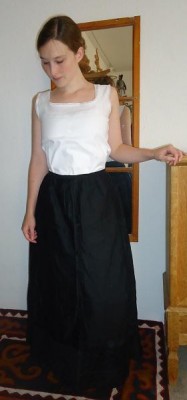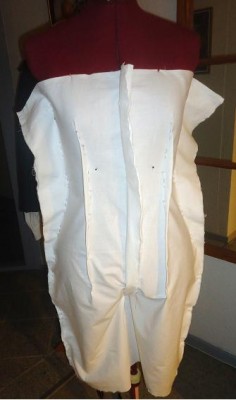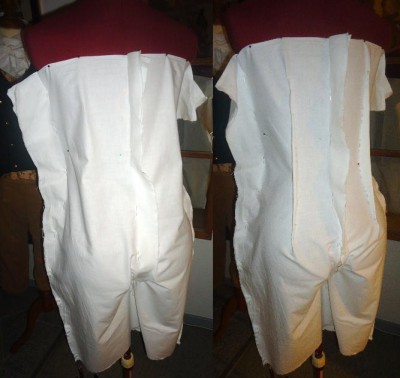
Ni som har läst förra inlägget, om hatten, vet att jag skulle sy en dräkt till 1800-talsdagen i Kisa, 19 juli. Jag ville ha en snoffsig dräkt för en dam från sekelskiftet. I “Patterns of Fashion” hade jag redan sett en del trevliga blus- och kjolmönster. Dessutom kikade jag runt på historiska kläder på Pinterest. Där hittade jag inspiration bland annat från denna dräkt:
Those who have read my last blog post, about my Rose Hat, know that I was about to sew a costume for the “19th century days” in Kisa, 19th of July. I wanted a swanky suit for a lady at the very start of the 20th century. In “Patterns of fashion 2” I had already spotted some nice skirt and shirtwaist patterns. I also roamed Pinterest’s vast plains of vintage garments. There I found inspiration in this shirtwaist.

Kjolen
I två månader snokade jag runt på Erikshjälpen, i jakt på ett vettigt kjoltyg. Till slut, helgen innan eventet, hittade jag en blå gardin för 69 kr.
For two months I snooped around at the town’s second hand shop, in hopes to find an appropriate skirt fabric. Finally I found a blue curtain for 69 SEK.

Jag vet inte hur det är med rättigheterna för mönstret, så jag lägger inte ut bilden här, men ni får i alla fall se hur kjolen ser ut innan den är hopsydd baktill.
I don’t know how the copyright works for this skirt pattern, so I won’t show it here. Anyhow, this what the skirt looks like from the wrong side, before it’s sewn together.
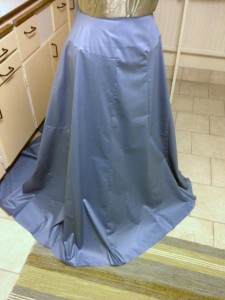
Kjolen knäpps baktill med hyskor och hakar. Den har fortfarande inte fått de dekorativa banden, som ska täcka sömmarna, men i väntan på att jag hittar lämpligt material, tycker jag att den ser helt ok ut som den är.
The skirt is closed with hooks and eyes in the back. It still hasn’t got the decorative ribbons, that should be on top of the seams. Until I find the optimal material for this, I think it looks alright though.
Blusen
Jag var osedvanligt förberedd när jag anlände till Sverige i år. Förutom att redan ha letat reda på lämpliga mönster, hade jag även hittat fina broderifiler på internet, som jag köpt, en snäll bekant hjälpt att konvertera till rätt filtyp, och sedan hade jag maskinbroderat mönstren på tyll.
I was unusually well prepared when I arrived in Sweden this year. Except for having found patterns, I had also bought appropriate machine embroidery files, got help from my sewing machine guru to convert them to the right file type, and had even sewn the embroidery on tulle leftovers.

Dessutom hade jag köpt ett tunt bomullstyg, medan jag praktiserade i Viborg, så därmed hade jag alla ingredienser som jag behövde för min blus.
Furthermore, I had bought a lightweight cotton fabric, while making my internship in Viborg. Hence, I had all the necessary ingredients for th shirtwaist.

Jag experimenterade med placering av veck och broderier på provdockan, innan jag började sy. Sedan började jag med stråvecken.
I experimented with the placement of the pin tucks and embroideries before I started sewing. Then I obviously made the pin tucks.

När detta var klart var det dags för placering av övriga broderier. Dessa nålade jag noga fast, hela vägen runt. Sedan klippte jag upp tyget bakom och fållade samtidigt som jag sydde fast broderiet i blusen.
When this was done, it was time for placing the embroideries. These I pinned down carefully, the whole way around. Then I cut superfluous fabric away as I hemmed and fastened the embroidery to the shirtwaist, from the wrong side.

Därefter skulle ärmarna fästas i blusen. Eftersom det är sommar och det 1903 verkar ha varit populärt med armbågslånga ärmar, gjorde jag dem korta. Innan jag sydde fast dem i blusen, gjorde jag en raksöm upptill och nedtill, med långa stygn, så att jag enkelt kunde dra åt tråden och rynka vid ärmkullen och runt armbågen. När ärmarna var fastsydda, gjode jag ett kantband i samma tyg och sydde fast nedtill.
Then the turn had come to the arms. As it is summer and elbow length of the arms seem to have been popular in 1903, I decided to go for short arms. Before attaching them, I made a “long, loose machine seam” at the top and the bottom and then gathered the fabric at the shoulder and elbow. Then I attached the arms to the shirtwaist and covered the raw edges with binding in the same fabric.
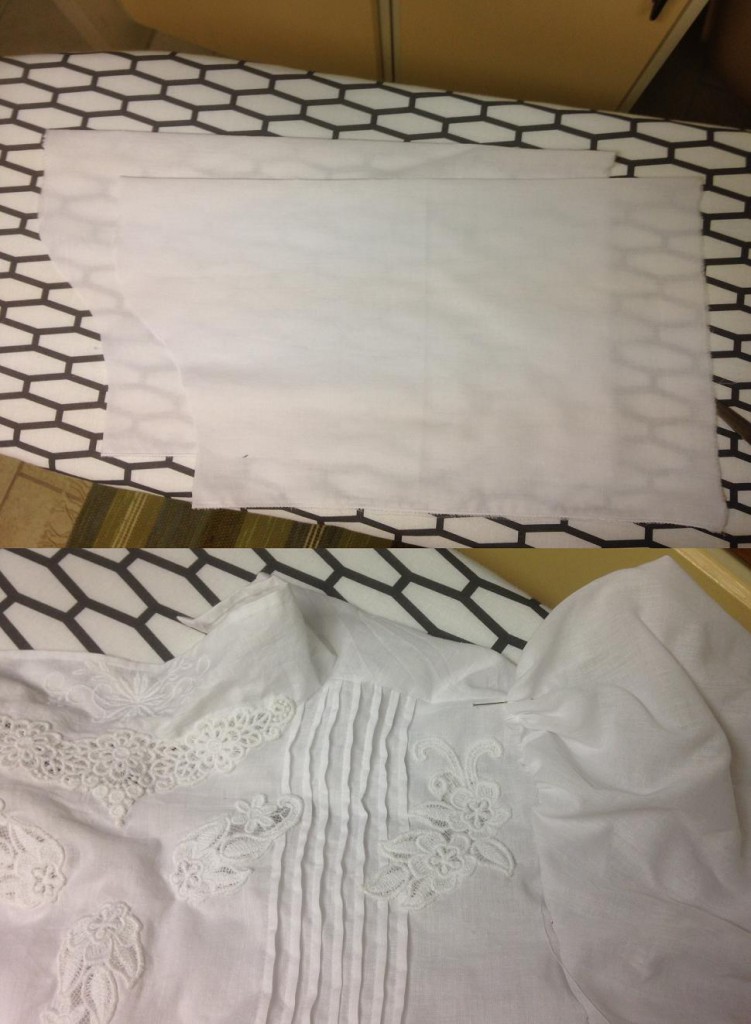
Sedan var det bara knäppningen kvar. Blusen är bara öppen halvvägs ner, så i nacken sydde jag fast dekorativa fuskpärlor med öglor i samma bomullstyg och nedanför knäppning med sydda hyskor och silverhakar.
Then there was nothing left but the closing in the back. It is sewn together at the bottom half. At the neck, I used pearl buttons and loops made from the same fabric. The rest was closed with silver hooks and eyes. This later proved to be a horrible solution, as the unusually big hairstyles use to get stuck in the hooks. Well, it looks great anyway.

Sedan var blusen faktiskt klar!
And suddenly, the costume was actually complete!















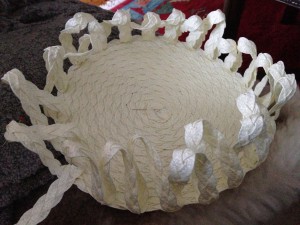


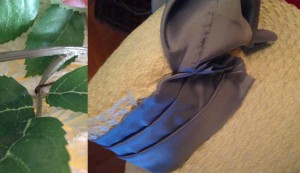

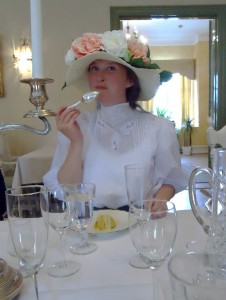



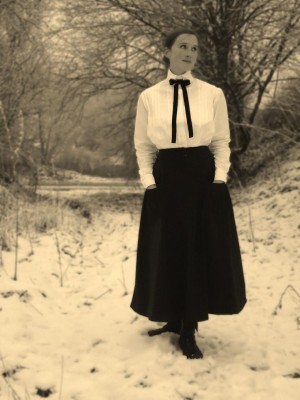

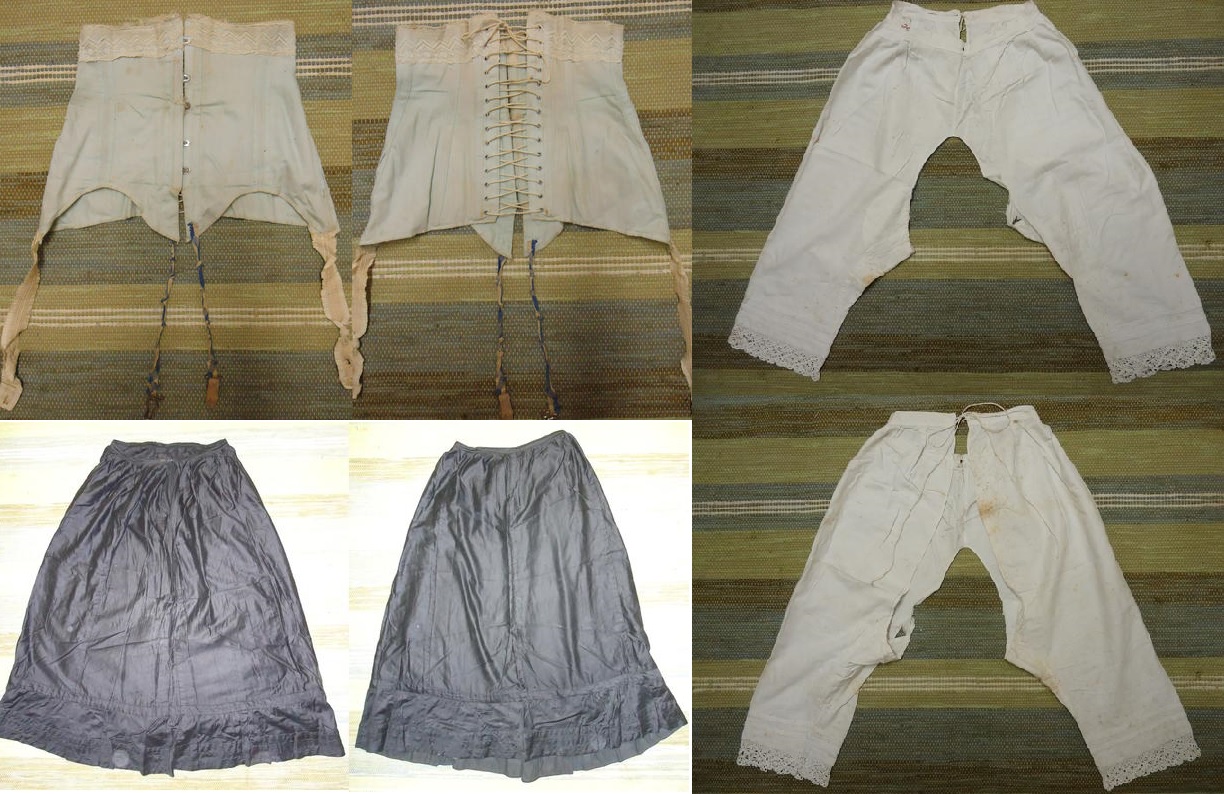

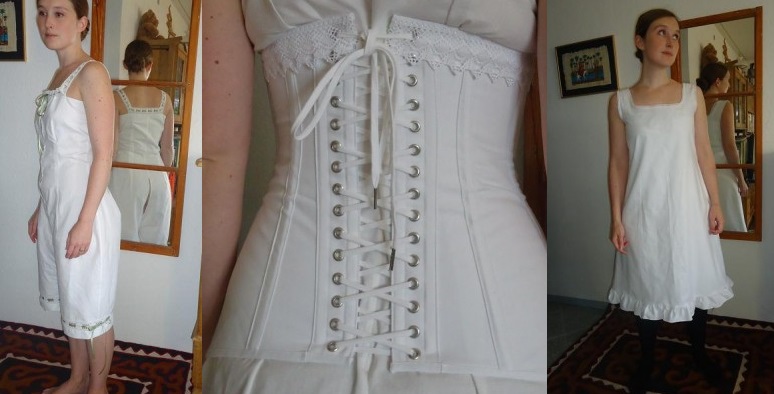



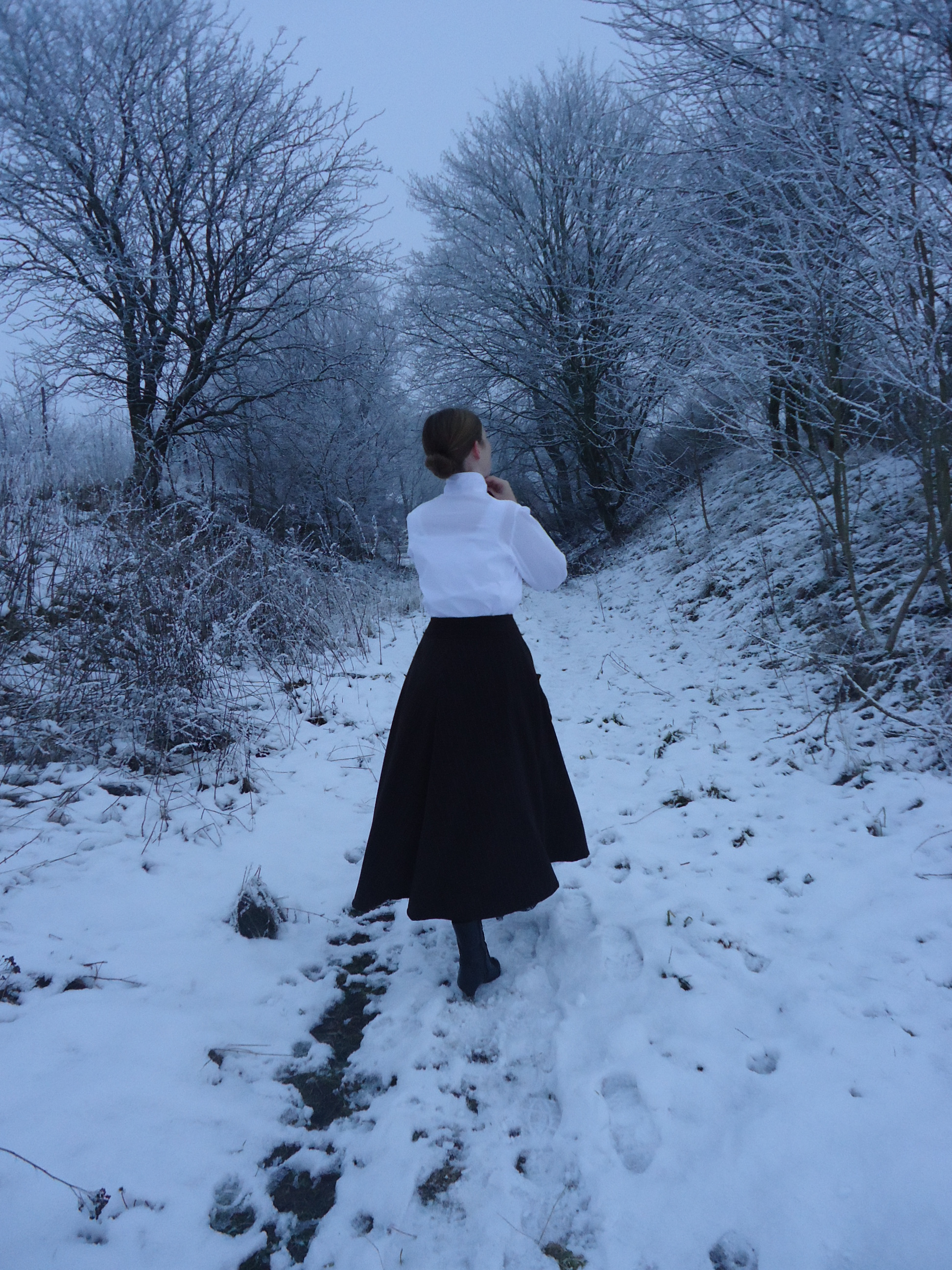



 Det händer då och då att jag får fantastiska gåvor, från de mest oväntade håll. Förra hösten kunde jag fullborda min kappa, tack vare en snäll medresenär som skänkte mig en vacker pälskrage. Förra sommaren fick jag flera kassar med tyger av en bekant och för någon månad sedan fick jag, förutom en ny favoritfilm, tillskickat vackra spännen för att dekorera min edwardianska dräkt. De passar inte till lärarinnekjolen, men väldigt bra till min tidigare dräkt! Tack, Ulrika!
Det händer då och då att jag får fantastiska gåvor, från de mest oväntade håll. Förra hösten kunde jag fullborda min kappa, tack vare en snäll medresenär som skänkte mig en vacker pälskrage. Förra sommaren fick jag flera kassar med tyger av en bekant och för någon månad sedan fick jag, förutom en ny favoritfilm, tillskickat vackra spännen för att dekorera min edwardianska dräkt. De passar inte till lärarinnekjolen, men väldigt bra till min tidigare dräkt! Tack, Ulrika!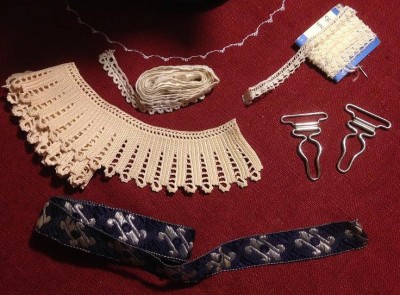
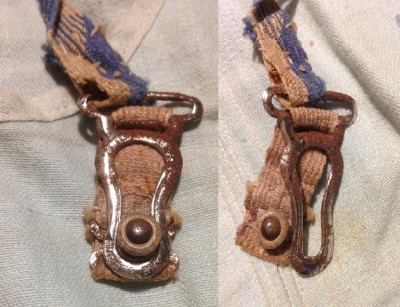
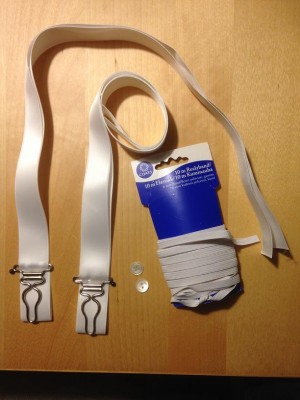


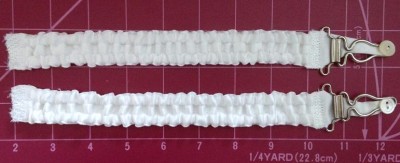

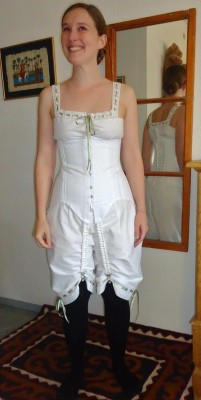
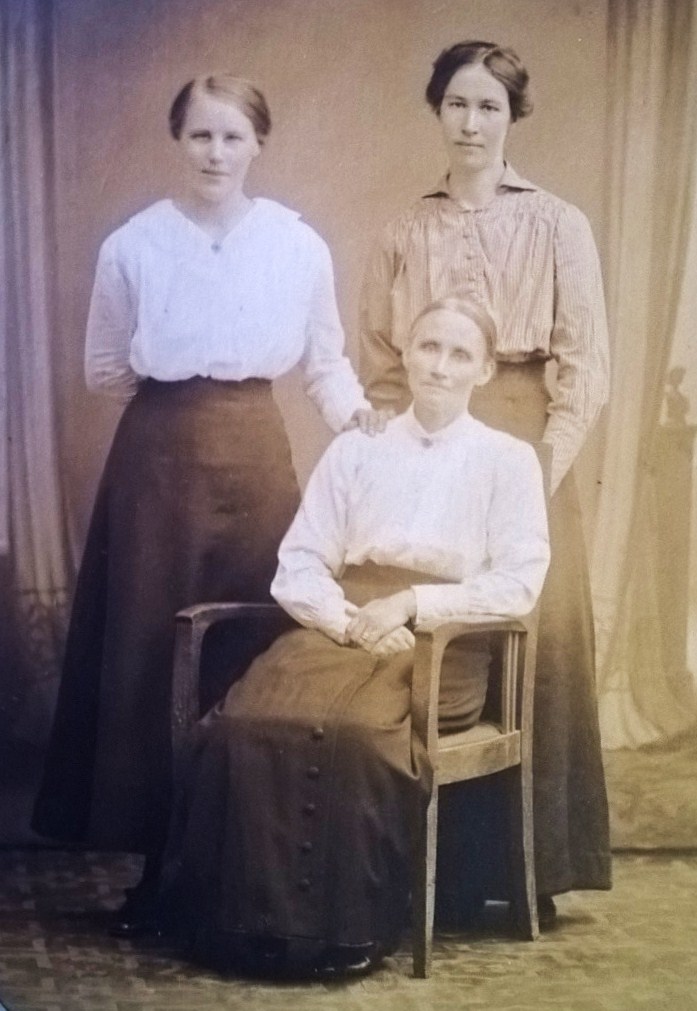








 Bilden intill ska föreställa en lärarinna, fotograferad 1914. Detta bekräftade vad jag hade hoppats på, att en proper lärarinna under första världskriget kunde fortsätta ha sina höghalsade blusar från starten av 1910-talet, trots att det verkar ha varit modernt med lägre kragar under 1914-1915.
Bilden intill ska föreställa en lärarinna, fotograferad 1914. Detta bekräftade vad jag hade hoppats på, att en proper lärarinna under första världskriget kunde fortsätta ha sina höghalsade blusar från starten av 1910-talet, trots att det verkar ha varit modernt med lägre kragar under 1914-1915.




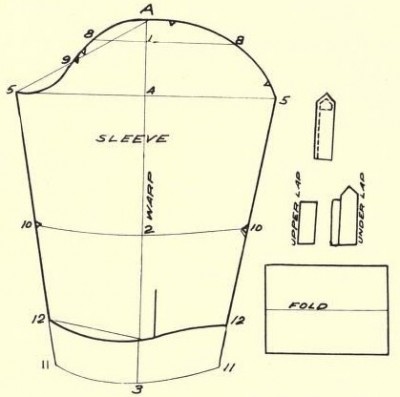

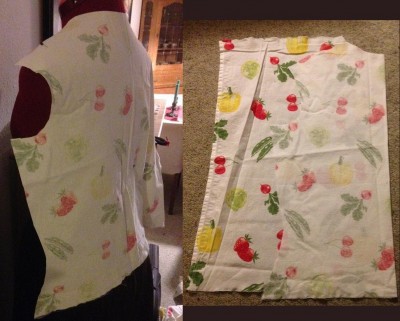



















 När jag bestämde mig för design på kjolen, försökte jag väga in både att kjolen skulle bäras av en modeintresserad kvinna, men även att hennes ekonomi skulle vara begränsad och att hon gärna skulle kunna cykla i den. Alltså fick den inte vara för uppseendeväckande och säsongsbunden, och helst ganska kort, men gärna med en “modern” siluett.
När jag bestämde mig för design på kjolen, försökte jag väga in både att kjolen skulle bäras av en modeintresserad kvinna, men även att hennes ekonomi skulle vara begränsad och att hon gärna skulle kunna cykla i den. Alltså fick den inte vara för uppseendeväckande och säsongsbunden, och helst ganska kort, men gärna med en “modern” siluett.


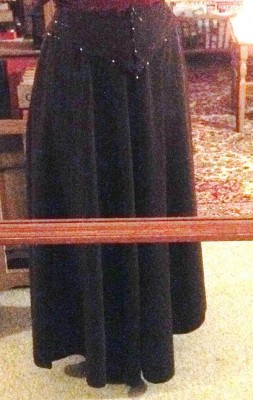


 När jag började med fickorna, hade jag fortfarande inte helt bestämt mig för hur de skulle se ut. Jag klippte ut några tyglappar och började experimentera. Jag hade sett flera trevliga veckade fick-varianter, bland annat på denna modebild från 1915:
När jag började med fickorna, hade jag fortfarande inte helt bestämt mig för hur de skulle se ut. Jag klippte ut några tyglappar och började experimentera. Jag hade sett flera trevliga veckade fick-varianter, bland annat på denna modebild från 1915:














